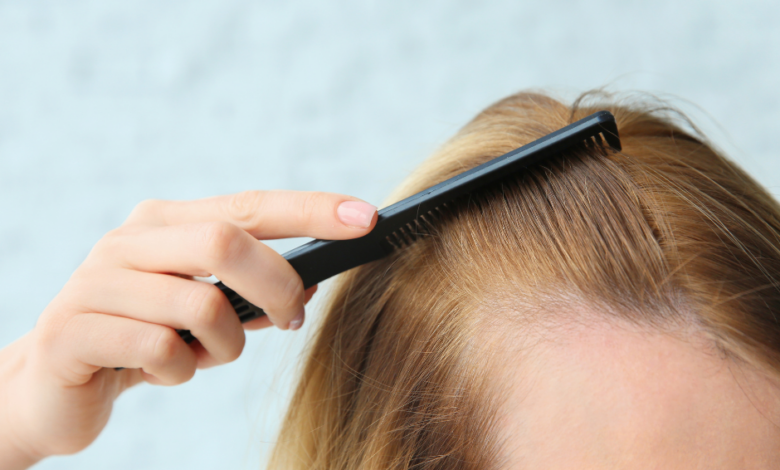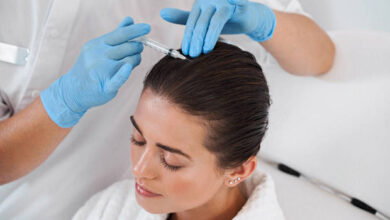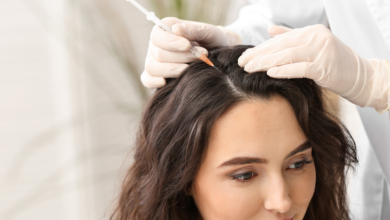
Dubai, known for its opulent lifestyle and cutting-edge technological advancements, is now breaking new ground in the field of hair transplantation. The rise of female hair transplantation in this bustling metropolis is nothing short of remarkable, as it challenges traditional gender roles and empowers women to regain their confidence. With state-of-the-art clinics and highly skilled professionals, women in Dubai have access to innovative techniques and personalized treatments that cater to their unique needs. Join us as we explore this groundbreaking trend that is transforming the beauty industry and paving the way for a more inclusive and empowering future for women in Dubai.
The Evolution of Hair Transplantation
The History of Hair Transplantation
Hair transplantation, a surgical procedure that involves moving hair follicles from one part of the body (the donor site) to another (the recipient site), has a rich and fascinating history. The first documented attempts at hair transplantation date back to the 19th century when surgeons experimented with techniques such as punch grafting and flap surgery. However, these early methods often resulted in unnatural-looking results and limited success rates.
The breakthrough in hair transplantation came in the 1950s when a dermatologist named Norman Orentreich introduced the concept of donor dominance. Orentreich discovered that hair follicles taken from the back of the scalp were resistant to the hormone DHT, which is responsible for causing male pattern baldness. This finding laid the foundation for modern hair transplantation techniques and opened up new possibilities for treating hair loss.
Advancements in Hair Transplantation Technology
Over the years, hair transplantation technology has advanced significantly, leading to improved results, shorter recovery times, and increased patient satisfaction. One of the key advancements is the shift from traditional strip harvesting to follicular unit extraction (FUE).
FUE involves individually extracting hair follicles from the donor area using a precision tool and then implanting them into the recipient area. This minimally invasive technique eliminates the need for a linear incision and results in smaller, less noticeable scars. Additionally, FUE allows for more precise placement of hair follicles, leading to a more natural-looking outcome.
Another significant advancement is the use of robotic technology in hair transplantation procedures. Robotic systems, such as the ARTAS system, assist surgeons in precise follicle extraction and implantation, reducing the risk of human error. These advancements in technology have revolutionized the field of hair transplantation, making it a highly precise and effective solution for hair loss.
The Growing Demand for Female Hair Transplantation
Changing Beauty Standards in Dubai
Dubai, known for its cosmopolitan culture and thriving beauty industry, has witnessed a shift in beauty standards over the years. Traditionally, long, thick hair has been considered a symbol of beauty and femininity in many cultures, including Dubai. However, changing societal norms and the influence of Western beauty standards have led to an increased emphasis on hair volume and overall aesthetics.
The Influence of Social Media
The rise of social media platforms has had a profound impact on beauty trends and perceptions. Influencers and celebrities showcasing their glamorous lifestyles and voluminous hair on platforms such as Instagram and YouTube have influenced beauty ideals, creating a desire among women to achieve similar looks. As a result, hair transplantation has emerged as a popular cosmetic procedure, allowing women to enhance their hair volume and regain lost confidence.
Increased Awareness and Acceptance
The growing awareness of the availability and effectiveness of hair transplantation procedures has contributed to the rising demand among women. In the past, hair transplantation was often associated with addressing male pattern baldness. However, advancements in techniques specifically tailored to female hair loss have made it a viable option for women struggling with various types of hair loss. This increased awareness, coupled with a more accepting society, has helped break down barriers and reduce the stigma associated with female hair transplantation.

Obstacles Faced by Women with Hair Loss
Societal Pressures and Stigma
Women experiencing hair loss often face societal pressures and stigmatization, as hair is closely tied to femininity and perceived attractiveness. The loss of hair can be emotionally distressing, affecting self-esteem and confidence. The fear of being judged or ostracized can prevent women from seeking help and exploring hair transplantation as a potential solution.
Cultural and Religious Factors
In some cultures and religions, the display of hair in public is considered immodest or inappropriate. This can create additional barriers for women seeking hair transplantation, as they may feel conflicted between their desire to address hair loss and their cultural or religious obligations. Overcoming these cultural and religious factors requires open conversations and a supportive environment that respects individual beliefs and choices.
Lack of Knowledge and Resources
Women facing hair loss often struggle to find reliable information and resources regarding available treatments. Lack of awareness about female-specific hair loss causes and the options for addressing them can lead to frustration and confusion. Access to qualified healthcare professionals and specialized clinics can bridge this knowledge gap and provide women with the necessary guidance to make informed decisions about hair transplantation.
Breaking Gender Barriers in Hair Transplantation
Pioneering Female Hair Transplant Surgeons
In recent years, female hair transplant surgeons have emerged as trailblazers in the field. Their expertise and experience in understanding female hair loss patterns and addressing unique challenges have played a crucial role in breaking gender barriers. Pioneers such as Dr. Sara Kotb and Dr. Nilofer Farjo have not only elevated the standards of female hair transplantation but also inspired a new generation of female surgeons entering the field.
Specialized Techniques for Female Hair Loss
The evolution of hair transplantation techniques has led to the development of specialized approaches for addressing female hair loss. Unlike male pattern baldness, female hair loss often occurs diffusely throughout the scalp and requires a nuanced approach. Hairline design, preservation of existing hair, and the natural placement of hair follicles are key considerations in achieving optimal results for women. These specialized techniques ensure that the transplanted hair blends seamlessly with the existing hair, creating a natural-looking outcome.
Addressing Female-Specific Hair Loss Issues
In addition to the technical aspects of the procedure, hair transplantation for women also takes into account unique hair loss causes such as hormonal imbalances, post-pregnancy hair loss, and traction alopecia from hairstyles. By addressing these specific issues and tailoring treatment plans accordingly, hair transplant surgeons can provide women with personalized solutions that address the root cause of their hair loss, leading to long-term success.

The Role of Dubai in the Rising Trend
Dubai as a Hub for Cosmetic Procedures
Dubai has positioned itself as a hub for cosmetic procedures, attracting individuals from around the world seeking high-quality medical care and aesthetic enhancements. The city’s state-of-the-art clinics, skilled surgeons, and reputation for excellence have made it an ideal destination for hair transplantation procedures. The availability of world-class facilities and a diverse array of treatment options make Dubai a sought-after location for individuals looking to address their hair loss concerns.
Luxurious Facilities and Cutting-Edge Technology
Dubai is renowned for its opulent lifestyle and extravagant amenities, and this extends to its hair transplant clinics. Many clinics in Dubai offer luxurious facilities, ensuring patients enjoy a comfortable and relaxing environment throughout their treatment journey. In addition to the lavish surroundings, these clinics are equipped with cutting-edge technology and advanced treatment options, ensuring the highest standard of care for patients seeking hair transplantation.
The Influence of Dubai’s Glamorous Lifestyle
Dubai’s glamorous lifestyle and international reputation as a city of innovation and luxury have contributed to the rising trend of hair transplantation. With a strong emphasis on beauty and aesthetic perfection, Dubai sets high standards for appearance. The desire to maintain or enhance one’s physical appearance aligns with the rising demand for hair transplantation among both men and women. Dubai’s fashion-conscious residents and visitors seek solutions that help them maintain their glamorous image, making hair transplantation a popular choice.

Choosing the Right Hair Transplant Clinic
Researching the Clinic’s Reputation and Experience
Selecting the right hair transplant clinic is critical to achieving optimal results. It is essential to conduct thorough research and assess the reputation and experience of the clinic. Reading reviews, seeking recommendations from trusted sources, and scrutinizing before-and-after photos can provide valuable insights into the clinic’s track record and the quality of its procedures. Choosing a clinic with a proven history of successful hair transplantations increases the chances of a successful outcome.
Consultation and Customized Treatment Plans
A reputable hair transplant clinic will offer a comprehensive consultation process. During this consultation, the surgeon will assess the patient’s hair loss condition, discuss their expectations, and develop a customized treatment plan tailored to their unique needs and desired outcomes. This personalized approach ensures that the patient’s concerns are addressed, and realistic expectations are set before proceeding with the procedure.
Assessing the Clinic’s Safety and Hygiene Measures
Patient safety and hygiene should be a top priority when choosing a hair transplant clinic. It is crucial to ensure that the clinic adheres to strict safety protocols and maintains a sterile environment throughout the procedure. Inquiring about the clinic’s infection control measures, the qualifications of the medical staff, and the use of advanced equipment and sterilization techniques can provide peace of mind and ensure a safe and successful experience.
The Procedure: What to Expect
Initial Consultation and Assessment
Before undergoing a hair transplantation procedure, an initial consultation and assessment are conducted to evaluate the patient’s suitability for the procedure. The surgeon will examine the extent of hair loss, assess the donor area’s hair density and quality, and discuss the patient’s goals and expectations. This consultation allows for the development of a personalized treatment plan and ensures that the patient is well-informed about the procedure.
Preparation and Anesthesia
On the day of the procedure, the patient will be prepared for the surgery. The donor area is trimmed to expose the hair follicles for extraction. Local anesthesia is administered to ensure comfort during the procedure. The anesthesia numbs the scalp, ensuring a painless experience for the patient.
Extraction and Transplantation Process
The extraction process begins by harvesting hair follicles from the donor area. Depending on the chosen technique, either FUE or strip harvesting, the surgeon carefully extracts hair follicles individually or as a strip. These follicles are then meticulously transplanted into the recipient area, following the pre-determined hairline design and ensuring natural placement of the hair follicles.
Post-Procedure Care and Recovery
After the procedure, the patient will be given specific post-procedure care instructions. This may include guidelines on how to properly clean and care for the transplanted area, as well as any medications or topical solutions to be used. It is essential to follow these instructions carefully to promote proper healing and maximize the success of the hair transplantation. Patients can typically resume their usual activities within a few days, but it may take several weeks for the transplanted hair to start growing.
Success Stories: Transforming Lives
Restoring Confidence and Self-Esteem
Hair transplantation has the power to restore confidence and improve self-esteem in individuals experiencing hair loss. Many women who have undergone the procedure have reported a significant boost in their self-confidence and an improved quality of life. The ability to regain a full head of hair allows individuals to feel more comfortable and at ease in social situations, ultimately transforming their lives.
Embracing Natural-Looking Results
One of the key advantages of modern hair transplantation techniques is the ability to achieve natural-looking results. Transplanted hair blends seamlessly with the existing hair, creating a natural and undetectable outcome. Women can confidently embrace their new hair, knowing that it reflects their authentic selves and enhances their natural beauty.
Overcoming Hair Loss-Related Challenges
Hair loss can present various challenges, both physically and emotionally. It can affect personal relationships, career choices, and overall well-being. Hair transplantation provides women with the opportunity to overcome these challenges and reclaim control over their appearance and their lives. By addressing the root cause of their hair loss, women can experience a sense of empowerment and renewed optimism for the future.

Future Trends in Female Hair Transplantation
Continued Advancements in Technology
As hair transplantation continues to gain popularity, advancements in technology are expected to further improve the procedure’s effectiveness and efficiency. Ongoing research and development in areas such as robotic-assisted procedures, hair cloning, and stem cell therapy hold great promise for the future of female hair transplantation. These advancements may offer even more tailored solutions for different hair loss causes and enhance the overall patient experience.
Increasing Accessibility and Affordability
As the demand for hair transplantation grows, efforts are being made to improve accessibility and affordability. Clinics and healthcare providers are exploring different financing options, insurance coverage, and competitive pricing strategies to make the procedure more accessible to a broader range of women. This increased accessibility ensures that more women can benefit from hair transplantation and regain their confidence.
Tailored Solutions for Different Hair Loss Causes
Every woman’s experience with hair loss is unique, and the underlying causes can vary significantly. Future trends in hair transplantation are likely to focus on developing tailored solutions that address specific hair loss causes, such as hormonal imbalances, genetic factors, or external factors like hairstyles. By understanding the complexities of hair loss, researchers and practitioners can develop targeted treatments that optimize results and provide long-lasting solutions for women.
Empowering Women Through Hair Transplantation
Enhancing Beauty and Well-Being
Hair transplantation goes beyond cosmetic enhancement; it is a powerful tool for enhancing both beauty and well-being. By addressing hair loss concerns, women can feel more confident, empowered, and comfortable in their own skin. The newfound self-assurance can positively impact various aspects of their lives, including personal relationships, career aspirations, and overall happiness.
Promoting Self-Acceptance and Empowerment
Hair transplantation plays a crucial role in promoting self-acceptance and empowering women to embrace their natural beauty. It encourages women to celebrate their individuality and uniqueness, regardless of societal beauty standards. By challenging traditional norms and embracing their true selves, women become role models for others, inspiring them to break through barriers and embrace their own journey of self-acceptance and empowerment.
Inspiring Others to Break Barriers
The rise of female hair transplantation in Dubai and beyond is not just a trend; it is a movement that inspires women to break barriers and challenge societal norms. By sharing their stories and experiences, women who have undergone hair transplantation encourage others to overcome their own insecurities and pursue their dreams. Through their bravery and resilience, these women pave the way for a more inclusive and accepting society, where everyone can feel empowered to be their true selves.
In conclusion, the evolution of hair transplantation has paved the way for women to address their hair loss concerns and regain their confidence. Through advancements in technology, the influence of Dubai’s beauty standards, and the empowerment of women, hair transplantation has become a transformative solution for women in Dubai and around the world. As the industry continues to grow and innovate, it is clear that the rising trend of female hair transplantation is not only changing lives but also breaking barriers and inspiring others to embrace their own beauty and empowerment.




